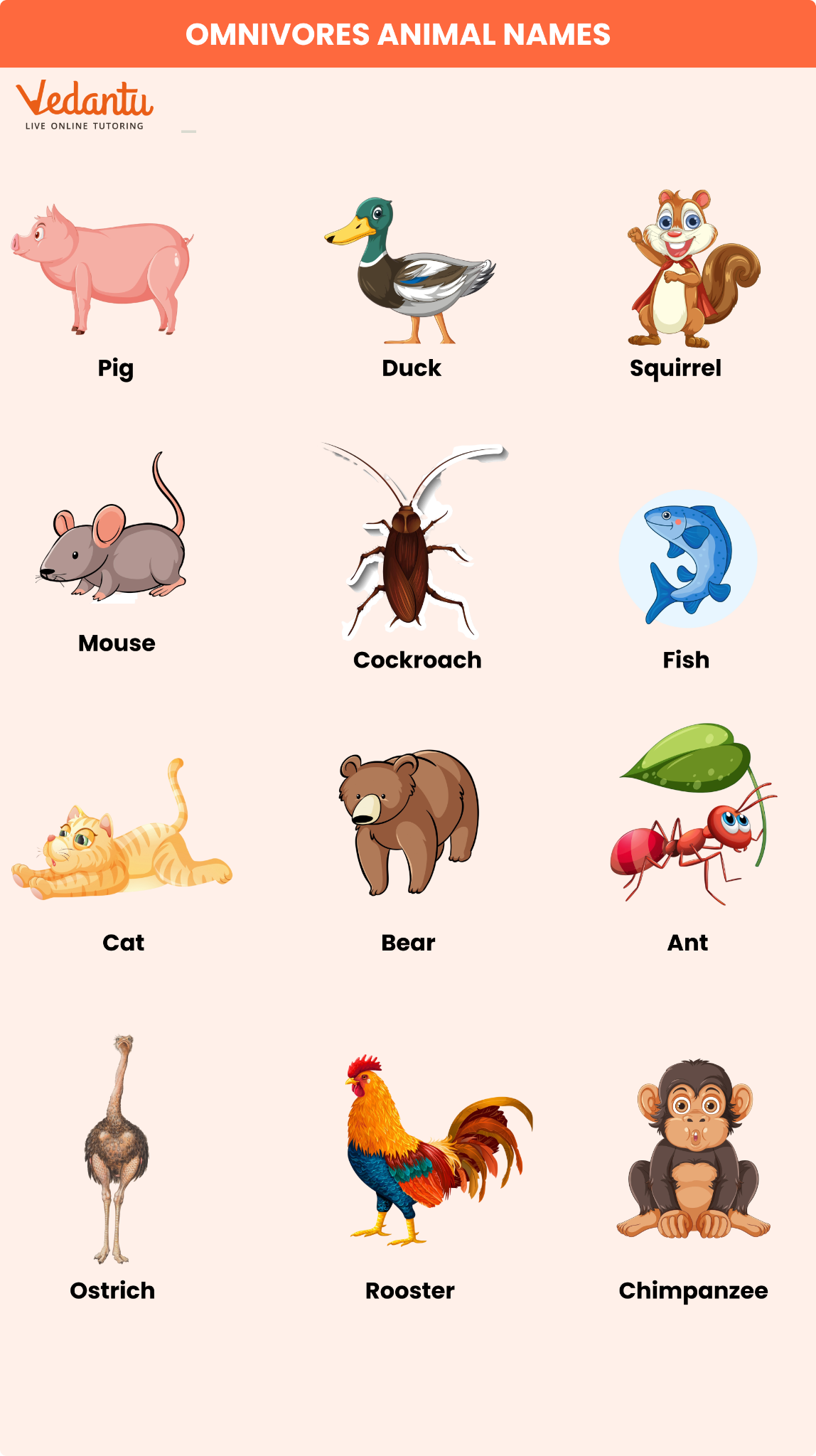




Omnivores Animals Name List with 10 Examples
FAQs on Omnivores Animals Names: A Complete List
1. What are omnivorous animals?
Omnivorous animals are creatures that eat both plants and meat. Their diets are flexible, allowing them to consume fruits, vegetables, and animal matter. This adaptability helps them thrive in various environments.
2. Can you provide 10 examples of omnivorous animals?
Examples of omnivorous animals include bears, raccoons, coyotes, pigs, and crows. These animals eat a mix of plant and animal foods, showing their dietary versatility.
3. What do omnivores animals eat?
Omnivores animals eat both plant-based and animal-based foods. This includes fruits, vegetables, insects, and small animals. Their varied diet helps them adapt to different environments.
4. What is an example of omnivorous?
An example of omnivorous is the brown bear, which eats berries, fish, and small mammals. Its diet changes with seasons to include various types of food sources.
5. Can you list some omnivorous animals’ names?
Omnivorous animals’ names include raccoons, foxes, crows, pigs, and hedgehogs. These animals have a varied diet, allowing them to eat both plant and animal matter.
6. What is the omnivores animals chart?
The omnivores animals chart shows different omnivorous animals and their diets. It includes examples like bears, crows, and pigs, highlighting their diverse food sources.
7. How do omnivorous animals adapt their diet?
Omnivorous animals adapt their diet by consuming both plants and animals. This flexibility helps them survive in different habitats and find food more easily.
8. What are some common omnivorous animals?
Common omnivorous animals include raccoons, coyotes, and chimpanzees. They eat a mix of fruits, insects, and small animals, which helps them thrive in various environments.
9. What are omnivorous animals’ key characteristics?
Omnivorous animals are characterized by their ability to eat both plant and animal foods. This dietary flexibility allows them to adapt to different habitats and food availability.
10. Can you give an example of an omnivorous animal?
An example of an omnivorous animal is the raccoon. Raccoons eat fruits, insects, and small animals, and they can live in both forests and urban areas.
11. What do omnivores animals typically eat?
Omnivores animals typically eat a combination of plants and animals. This includes vegetables, fruits, insects, and small mammals, making their diet very diverse.
12. Where can I find a list of omnivorous animals?
A list of omnivorous animals can include species like bears, crows, and pigs. This list helps to understand the variety of diets and habitats these animals occupy.























